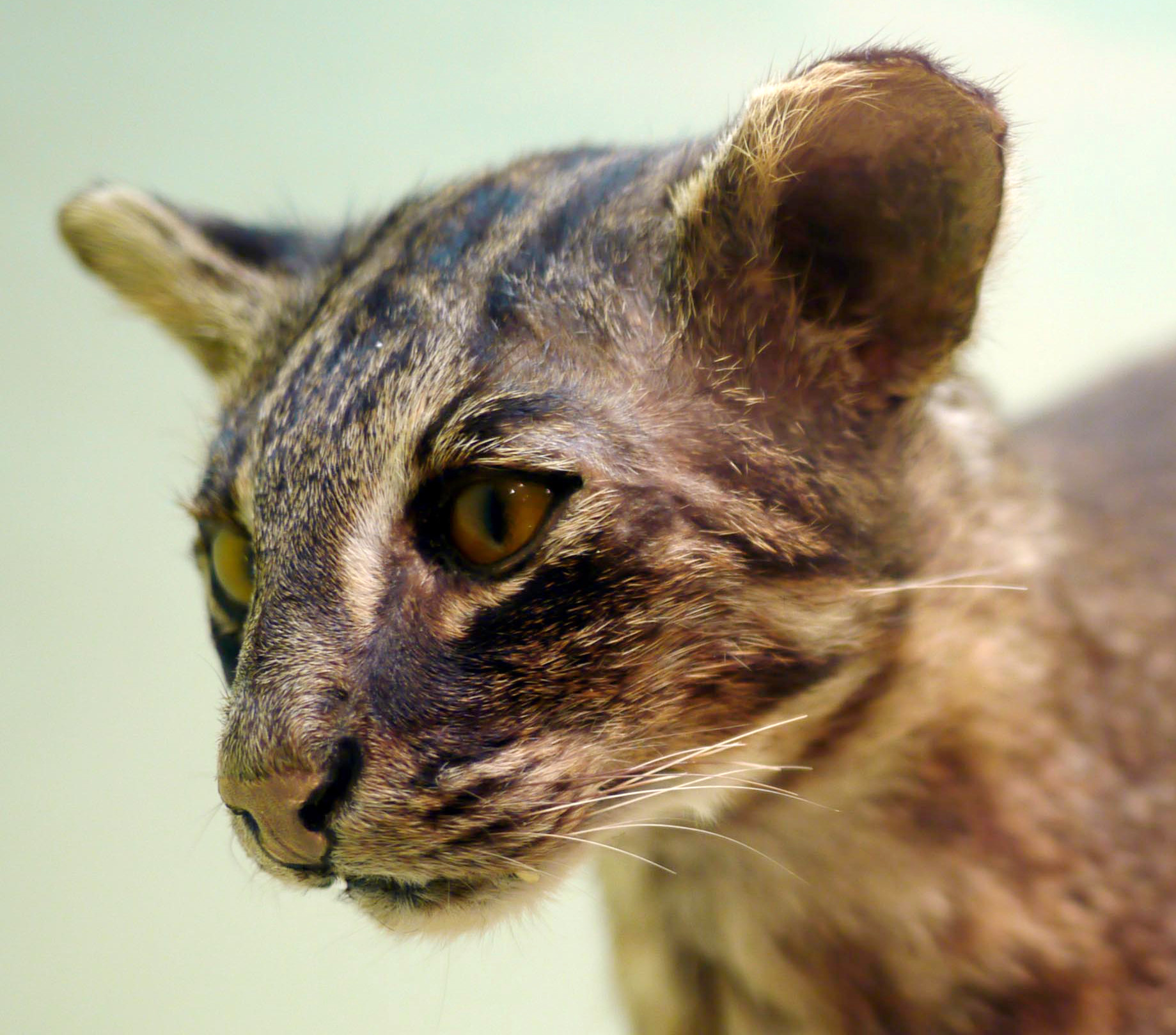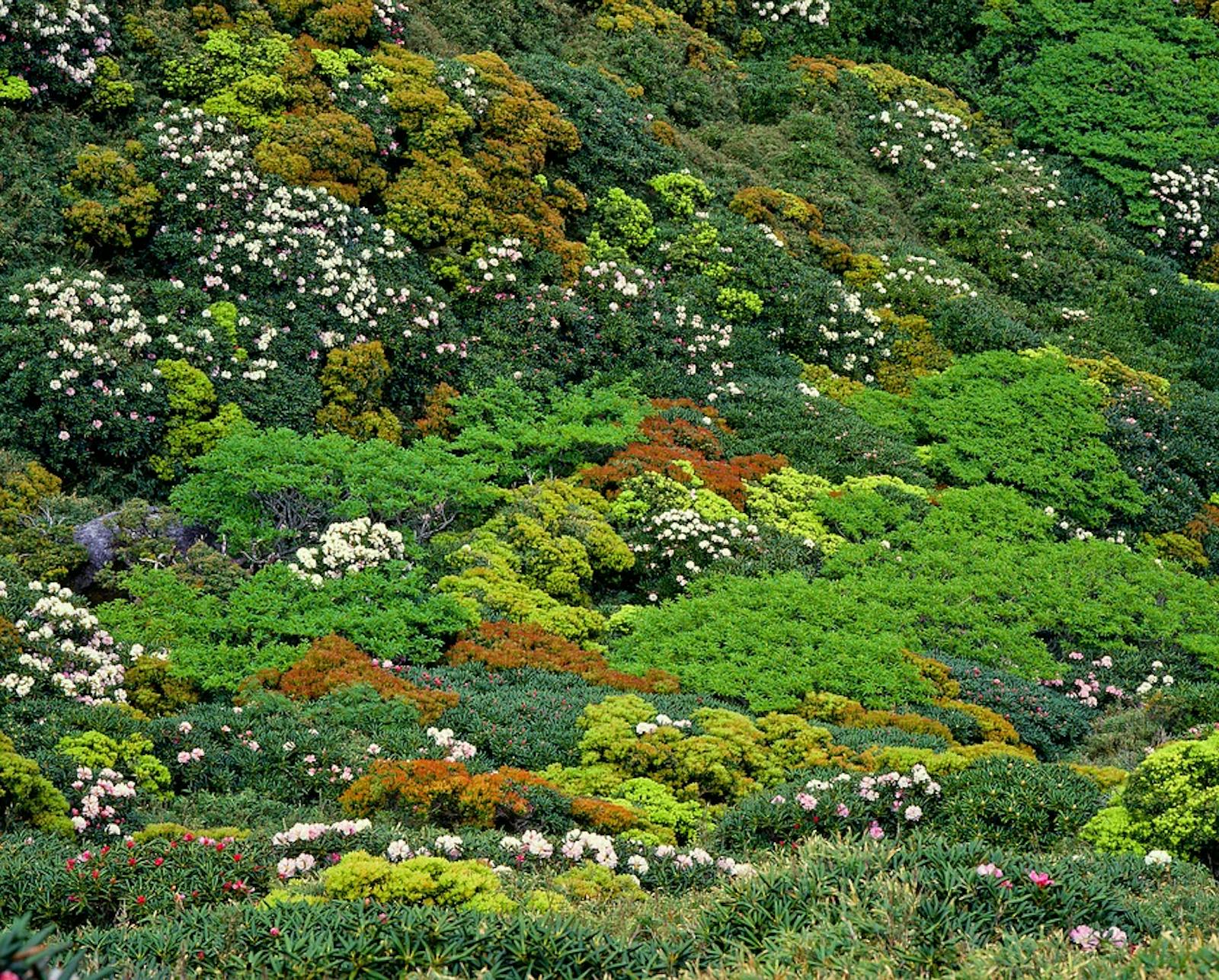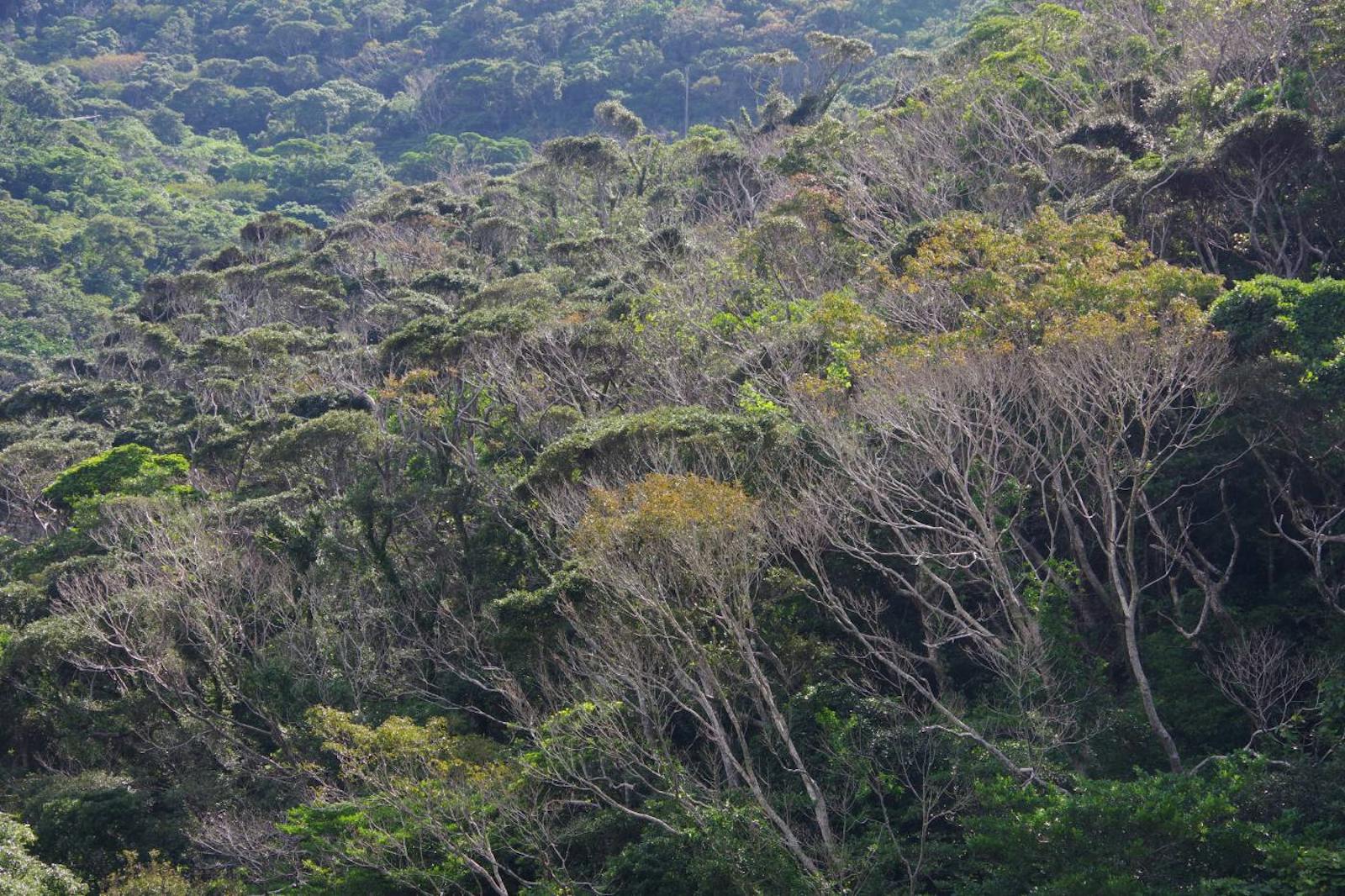Nansei Islands Subtropical Evergreen Forests
The ecoregion’s land area is provided in units of 1,000 hectares. The conservation target is the Global Safety Net (GSN1) area for the given ecoregion. The protection level indicates the percentage of the GSN goal that is currently protected on a scale of 0-10. N/A means data is not available at this time.
Bioregion: Nansei Islands Subtropical Evergreen Forests (IM14)
Realm: Indomalaya
Ecoregion Size (1000 ha):
408
Ecoregion ID:
251
Conservation Target:
97%
Protection Level:
4
States: Japan
The Ryukyu wood pigeon is extinct. It used to be endemic to the Okinawa group of islands along the Nansei archipelago, but has not been seen since 1936. Its unfortunate end has been attributed to the conversion of the subtropical forests which was its primary habitat, combined with hunting of the dwindling populations. Unfortunately, without urgent conservation action, dozens more species of mammals, birds, reptiles, and amphibians that are endemic to the small isolated islands along the archipelago could face the same fate as the Ryukyu wood pigeon.

The flagship species of the Nansei Islands Subtropical Evergreen Forests ecoregion is the Iriomote cat. Image credit: Courtesy of Flickr
The Nansei Islands subtropical evergreen forests ecoregion covers the 1,050 km-long chain of over 100 small islands that stretches from Kyushu Island of Japan to Taiwan. Okinawa is one of the more well-known of the Nansei islands, where a fierce battle was fought during World War II. The Nansei Islands, also known as Ryukyu Islands, emerged from an undersea mountain range that arcs westwards from Japan to Taiwan.
The northern islands have volcanic origins and are composed of igneous rock, whereas the southern islands are Mesocenozoic period karst-limestone. The topography is rugged and steep. The highest point is 1,935 m on the island of Yaku. The climate in the north is subtropical, transitioning to a tropical monsoon climate in the south, with 2,000 to 3,500 mm of annual rainfall. Typhoons can be frequent between August and September. Winter temperatures are around 18°C and summer temperature around 28°C.
The temperate broadleaf forests of the northern islands are dominated by species of the oak family, Fagaceae, especially Castanopsis cuspidata, Quercus salicina, Quercus acuta, and Lithocarpus edulis, mixed with other species such as Distylium racemosum, Persea thunbergii, Neolitsea aciculata, Rhododendron tashiroi, Symplocos prunifolia, and S. glauca, with conifer forests of Cryptomeria japonica, Tsuga sieboldii, and Abies firma in the higher elevations.
On the islands in the middle reaches the forests are dominated by Castanopsis sieboldii, Schima wallichii, Symplocos prunifolia, Distylium rasemosum, Rapanea neriifolia, Randia canthioides, Elaeocarpus japonicas, Cinnamomum doederleinii, Daphniphyllum glaucescens, Syzgium buxifotium, and Neolitsea sericea.[4] In the southern islands, the forests are more tropical, composed of Distylium racemosum, Dendropanax trufolius, Daphniphyllum glaucescens, Osmanthus marginatus, Ardisia seiboldii, Schefflera octophylla, and Camelia lutchuensis.[5],[6] Cyclobalanopsis miyagii, Adinandra yaeyamensis, Eurya sakishimensis, Cinnamomum doederleinii, and Ilex warbugii are among the many plants endemic to the Ryukyu Islands.
Endemism among the fauna is also high. Endemic mammals include the Iriomote cat, Ryukyu flying fox, Ryukyu long-tailed giant rat, Ryukyu mouse, Ryukyu shrew, and lesser Ryukyu shrew. Endemic birds are the amami woodcock, Izu thrush, Okinawa rail, Ryukyu robin, and Ryūkyū scops owl. About half of the amphibians are endemics, including two newts, the sword-tail newt and Anderson's crocodile newt, and several frogs. Likewise, several turtles, snakes, and lizards are also endemic to the islands. Unsurprisingly, the ecoregion has three Alliance for Zero Extinction (AZE) sites: Yanbaru National Park on Okinawa Island, and Mount Amagi and Mount Inokawa on Tokunoshima Island.
Over 45% of the forests still remain, and 23% are protected, with the protected areas distributed across most islands. But forest loss, infrastructure expansion, and hunting continue to affect biodiversity, especially the endemic species, many of which are already on the IUCN’s Red List as endangered. For instance, the population of the Iriomote cat is estimated at only 100 individuals and declining.
Thus, the recommended priority conservation actions are to: 1) make infrastructure more wildlife and ‘biodiversity friendly’; 2) conserve additional representative forests and habitats; 3) implement species recovery plans.
Citations
1. The National Biodiversity Strategy of Japan 2012-2020. Roadmap towards the Establishment of an Enriching Society in Harmony with Nature. September 2012. Ministry of Environment, Government of Japan. https://www.cbd.int/doc/world/jp/jp-nbsap-v5-en.pdf Accessed 12 March 2018r.
2. Xu, X., Hirata, E., Tokashiki, Y. and Shinohara, T., 2001. Structure and species diversity of subtropical evergreen broad-leaved forest in northern Okinawa Island, Japan. Journal of Forest Research, 6(3), pp.203-210.
3. ITOW, S., ONO, M. and SEKI, T., 1984. Species diversity of subtropical evergreen broadleaf forests on the Ryukyu and the Bonin Islands. Japanese Journal of Ecology, 34(4), pp.467-472.




